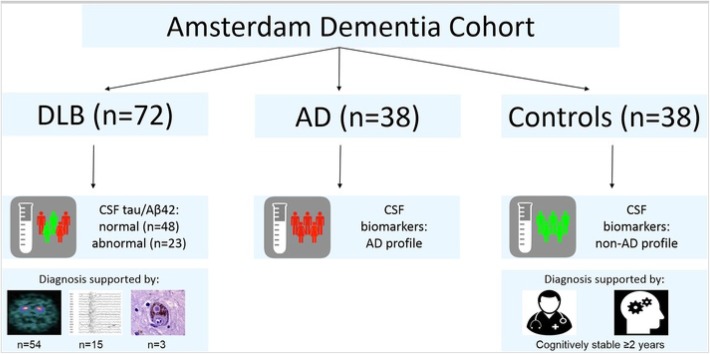Fig. 1.
Flow chart of patient selection. We selected 72 patients with a diagnosis of probable DLB and matched them for age and sex with 38 patients with a diagnosis of probable AD and 38 patients with subjective cognitive decline (SCD) who served as control subjects from the Amsterdam Dementia Cohort. DLB patients were stratified into two groups: DLB patients with an AD CSF profile (CSF tau/Aβ1-42 ≥ 0.52 [24]; DLB AD+, n = 23) and DLB patients with a normal CSF profile (CSF tau/Aβ1-42 < 0.52; DLB AD−, n = 48). The diagnosis of DLB was supported by (123) I-FP-CIT-SPECT (DAT-SPECT) findings showing presynaptic dopaminergic deficits (n = 54, 75%) or by slow-wave activity on EEG (n = 15, 21%), or was confirmed at autopsy (n = 3, 4%). All AD patients had a CSF profile compatible with AD. All controls had normal AD biomarker levels and preserved normal cognitive function on neuropsychological testing for at least 2 years after first presentation at the memory clinic

